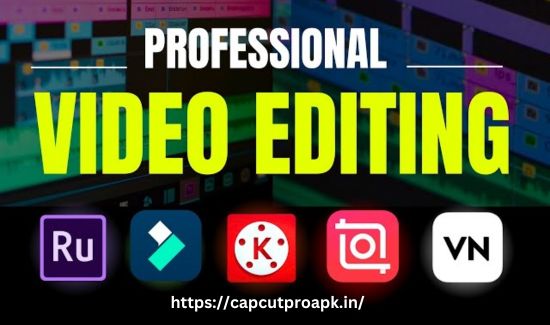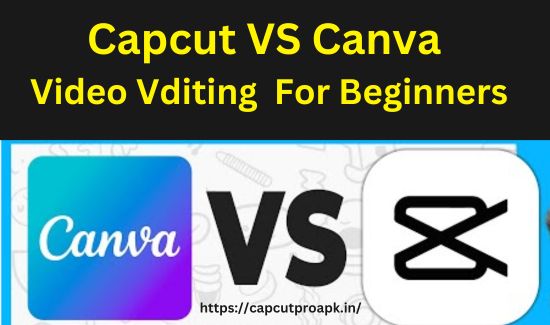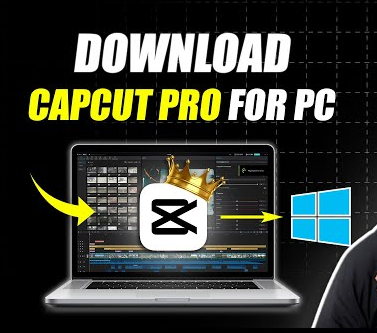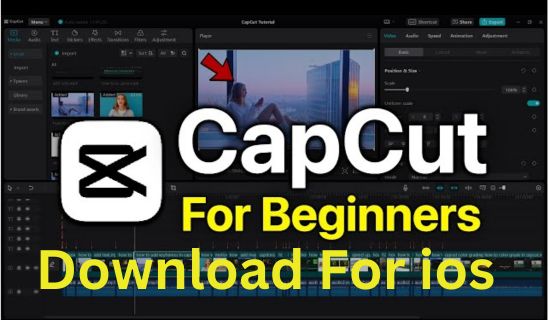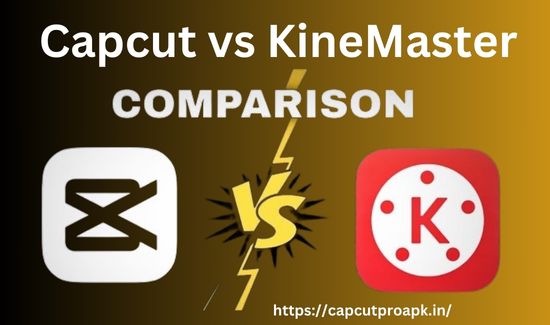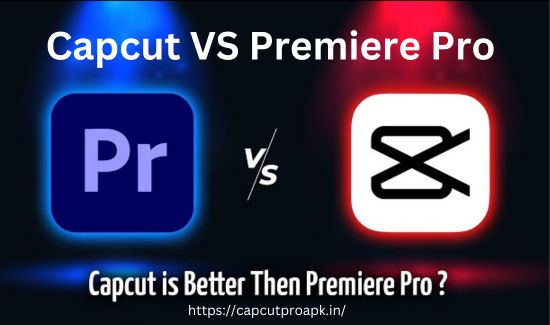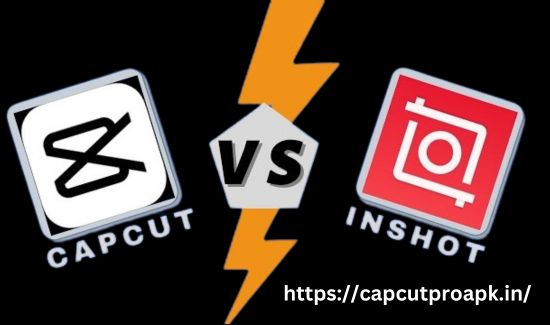What is the Best Video Editing App For Beginners? 2025
In today’s digital age, video content has become a dominant form of communication, entertainment, and marketing. Whether you’re a professional filmmaker, a social media influencer, a content creator, or simply someone who enjoys making videos, the right video editing app can make all the difference. With a plethora of options available, choosing the best video editing app can be a daunting task.
This article aims to demystify the process by providing a comprehensive comparison of some of the most popular video editing apps on the market: CapCut, Kinemaster, Adobe Premiere Pro, Filmora, Canva, InShot, and iMovie. Each of these apps offers unique features and capabilities tailored to different types of users and editing needs.
We’ll delve into the strengths and weaknesses of each app, compare their features, and provide insights into their usability and suitability for various purposes. By the end of this article, you’ll have a clearer understanding of which video editing app might be the best fit for your specific requirements, whether you’re editing videos for social media, professional projects, or personal enjoyment.
1. CapCut
CapCut is a popular mobile video editing app known for its user-friendly interface and rich feature set. Developed by ByteDance, the same company behind TikTok, CapCut is designed to help users create engaging video content quickly and easily. It is especially popular among social media content creators due to its wide array of effects and editing tools.
Features
- Basic Editing Tools: Trimming, cutting, splitting, merging
- Advanced Features: Transitions, filters, speed control, effects
- Asset Library: Music, stickers, text overlays
- User-Friendly Interface: Easy navigation and intuitive controls
- Free to Use: No cost for basic features, with optional in-app purchases for additional assets
Pros and Cons
| Pros | Cons |
|---|---|
| User-friendly interface | Limited advanced features compared to desktop apps |
| Free to use | Export quality options are limited |
| Rich in features for mobile editing | Can be resource-intensive on lower-end devices |
| Extensive asset library (music, stickers, text overlays) | Some features require internet access |
| Integrated with TikTok for easy sharing | No desktop version |
Use Cases
CapCut is ideal for quick edits and creating engaging social media videos. It is perfect for users who need a straightforward, feature-rich mobile app for video editing without the complexity of professional desktop software.
2. Kinemaster
Kinemaster is a powerful mobile video editing app that offers a range of professional-grade features in an easy-to-use interface. It is widely used by vloggers, social media influencers, and casual video editors who need more advanced capabilities on their mobile devices.
Features
- Multi-layer Editing: Supports video, audio, text, and effects layers
- Real-time Recording: Record video and audio directly within the app
- Asset Store: Access to additional effects, transitions, and elements
- Chroma Key: Green screen support for background replacement
- Audio Editing: Volume envelope, audio filters, and effects
- Export Options: High-quality video export up to 4K resolution
Pros and Cons
| Pros | Cons |
|---|---|
| Multi-layer editing capabilities | Watermark in the free version |
| Real-time recording and editing | Some features require a subscription |
| Wide range of effects and transitions | Can be resource-intensive on older devices |
| Chroma key support for green screen effects | Interface may be complex for beginners |
| High-quality video export options | Asset store items can add to the overall cost |
Use Cases
Kinemaster is suitable for users who need detailed editing and professional-quality video production on their mobile devices. It is ideal for vloggers, social media influencers, and anyone looking to create polished, professional-looking videos on the go.
3. Adobe Premiere ProOverview
Adobe Premiere Pro is a leading professional desktop video editing software widely used in the film, television, and web content creation industries. Known for its comprehensive set of advanced features and seamless integration with other Adobe Creative Cloud applications, it is the go-to choice for many professional video editors.
Features
- Advanced Editing Tools: Precise trimming, cutting, and splicing
- Multi-Camera Editing: Support for editing footage from multiple camera angles
- Motion Graphics and Titles: Integrated with Adobe After Effects
- Color Correction and Grading: Lumetri Color tools for advanced color adjustments
- Audio Editing: Detailed audio controls, including mixing and mastering
- Integration with Adobe Creative Cloud: Seamless workflow with Photoshop, After Effects, and more
- High-Resolution Support: Editing and exporting in 4K, 8K, and VR formats
Pros and Cons
| Pros | Cons |
|---|---|
| Industry-standard tool used by professionals | Expensive subscription model |
| Comprehensive set of advanced features | Steep learning curve for beginners |
| Seamless integration with other Adobe Creative Cloud apps | Requires a powerful computer to run smoothly |
| Support for high-resolution formats and multi-camera editing | Subscription required for ongoing use |
| Regular updates and improvements | Can be overwhelming for casual users |
Use Cases
Adobe Premiere Pro is ideal for professional video editors, filmmakers, and production studios that require robust, advanced editing tools and seamless integration with other creative software. It is best suited for complex projects that demand high precision, extensive editing capabilities, and professional-grade output.
4. Filmora
Filmora is a user-friendly video editing software designed for both desktop and mobile platforms. It is popular among beginners and intermediate users, offering a range of features that strike a balance between simplicity and functionality. Filmora is especially favored by YouTubers and content creators for its ease of use and affordable pricing.
Features
- User-Friendly Interface: Intuitive drag-and-drop editing
- Basic Editing Tools: Trimming, cutting, splitting, merging
- Advanced Features: Keyframing, color grading, audio ducking
- Effects and Transitions: Wide variety of built-in effects, transitions, and filters
- Text and Titles: Customizable text overlays and titles
- Music and Sound Effects: Built-in music library and sound effects
- Export Options: Supports high-quality export up to 4K resolution
Pros and Cons
| Pros | Cons |
|---|---|
| Easy to use and learn | Some advanced features are limited compared to professional software |
| Affordable pricing | Watermark in the free version |
| Rich library of effects and transitions | Export options and rendering can be slower on older computers |
| Good balance of basic and advanced features | Limited customization for some advanced tools |
| Cross-platform availability (Windows and macOS) | May lack depth for professional-grade projects |
Use Cases
Filmora is great for beginners and intermediate users who need a straightforward yet powerful video editing tool. It is ideal for YouTubers, vloggers, and casual video editors who want to create high-quality content without the complexity of professional software. Filmora’s user-friendly interface and affordable pricing make it accessible to a wide range of users.
5. Canva
Canva is a versatile web-based design tool that includes video editing capabilities. It is known for its ease of use and extensive library of templates and design elements. Canva is popular among marketers, small business owners, and casual users who need to create engaging visual content quickly.
Features
- Template-Based Editing: Thousands of customizable templates for quick creation
- Design Elements: Access to text, graphics, animations, and stock footage
- Simple Video Editing Tools: Trimming, splitting, and merging video clips
- Drag-and-Drop Interface: Intuitive and easy to use
- Collaboration and Sharing: Real-time collaboration and sharing options
- Integration with Canva Design Tools: Create comprehensive multimedia content
- Cloud-Based Platform: Access projects from anywhere with an internet connection
Pros and Cons
| Pros | Cons |
|---|---|
| Easy to use with an intuitive drag-and-drop interface | Limited advanced video editing features |
| Extensive library of templates and design elements | Requires internet connection for use |
| Ideal for quick, visually appealing video creation | Free version has limited features and assets |
| Collaboration features for team projects | Export options can be limited in the free version |
| Integrated with other Canva design tools | Not suitable for professional-grade video editing |
Use Cases
Canva is perfect for users who need to create promotional videos, social media content, and other visually appealing multimedia quickly and easily. It is ideal for marketers, small business owners, and casual users who prefer a simple, template-based approach to video editing. Canva’s ease of use and extensive design library make it a go-to tool for non-professional editors who need to produce high-quality content efficiently.
6. InShot
InShot is a popular mobile video editing app known for its user-friendly interface and robust feature set, tailored for social media content creation. It is widely used by influencers, vloggers, and casual video editors who want to create polished videos quickly on their smartphones.
Features
- Basic Editing Tools: Trimming, cutting, splitting, and merging
- Advanced Features: Speed control, transitions, filters, and effects
- Text and Stickers: Add text, emojis, and stickers to videos
- Audio Editing: Music, sound effects, and voiceover capabilities
- Video Backgrounds: Blur or add background colors to videos
- Aspect Ratio Settings: Easily adjust for different social media platforms
- Export Options: High-quality video export, suitable for sharing on social media
Pros and Cons
| Pros | Cons |
|---|---|
| User-friendly interface | Watermark in the free version |
| Good selection of effects, filters, and transitions | Some features require in-app purchases |
| Ideal for quick edits and social media content | Limited advanced editing features compared to desktop apps |
| Text, stickers, and music options | Export resolution may be limited on some devices |
| Supports various aspect ratios for social media | Can be resource-intensive on lower-end smartphones |
Use Cases
InShot is perfect for creating short, engaging videos for social media platforms like Instagram, TikTok, and YouTube. It is ideal for influencers, vloggers, and casual users who need a straightforward, feature-rich mobile app for video editing. The app’s ease of use and focus on social media make it a great choice for anyone looking to produce high-quality videos quickly and easily.
7. iMovie
iMovie is a native video editing application for macOS and iOS, designed by Apple. It is known for its simplicity and integration within the Apple ecosystem, making it a popular choice for beginners and casual users looking to create high-quality videos without the complexity of professional software.
Features
- User-Friendly Interface: Simple and intuitive design
- Basic Editing Tools: Trimming, cutting, splitting, and merging
- Advanced Features: Green screen effects, picture-in-picture, and split-screen
- Templates and Themes: Pre-designed themes and trailers
- Audio Editing: Built-in music, sound effects, and voiceover recording
- Video Stabilization: Smooth shaky footage
- 4K Video Support: Edit and export in high resolution
- Seamless Integration: Works well with other Apple products and iCloud for project syncing
Pros and Cons
| Pros | Cons |
|---|---|
| Free for Apple users | Limited to Apple devices (macOS and iOS) |
| Easy to use and learn | Lacks advanced features found in professional software |
| Good basic and some advanced editing tools | Limited customization options for effects |
| High-quality export options, including 4K | Not suitable for complex, professional-grade projects |
| Seamless integration with Apple ecosystem | Can be resource-intensive on older devices |
Use Cases
iMovie is ideal for beginners, casual users, and Apple enthusiasts who want to create and edit videos with ease. It is great for making family videos, school projects, and social media content. Its simplicity, combined with some advanced features, makes it a versatile tool for users looking to produce high-quality videos without the need for professional-grade software.
Comparison Table of Video Editing Apps
| App | Platform | Target Audience | Key Features | Pros | Cons |
|---|---|---|---|---|---|
| CapCut | Mobile (iOS, Android) | Casual users, social media creators | Basic editing, transitions, filters, effects, asset library | Free, user-friendly, feature-rich for mobile editing | Limited advanced features, limited export quality options |
| Kinemaster | Mobile (iOS, Android) | Vloggers, influencers, mobile users | Multi-layer editing, real-time recording, chroma key | Powerful features, user-friendly, good for professional videos | Watermark in free version, some features require subscription |
| Adobe Premiere Pro | Desktop (Windows, macOS) | Professional editors, filmmakers | Advanced editing tools, multi-camera, color grading | Industry-standard, robust features, Creative Cloud integration | Expensive, steep learning curve, requires a powerful computer |
| Filmora | Desktop (Windows, macOS), Mobile | Beginners, YouTubers, content creators | Basic and advanced editing, effects, transitions | Easy to use, affordable, feature-rich | Limited advanced features, watermark in free version |
| Canva | Web-based | Marketers, small business owners, casual users | Template-based editing, design elements, collaboration | Easy to use, extensive templates, great for quick creation | Limited advanced editing features, requires internet connection |
| InShot | Mobile (iOS, Android) | Social media creators, casual users | Basic editing, effects, filters, text, stickers | User-friendly, good for quick edits, integrates with social media | Watermark in free version, some features require in-app purchases |
| iMovie | Desktop (macOS), Mobile (iOS) | Beginners, Apple users, casual editors | Basic editing, green screen, templates, audio editing | Free for Apple users, easy to use, high-quality export | Limited to Apple devices, lacks advanced features |
Conclusion
Choosing the best video editing app depends largely on your specific needs, expertise level, and the type of projects you intend to work on. Here’s a summary based on the comparison:
- For Casual and Mobile Editing:
- CapCut and InShot are excellent choices due to their user-friendly interfaces, rich feature sets, and suitability for quick edits and social media content creation.
- Kinemaster offers more advanced features like multi-layer editing and chroma key, making it ideal for mobile users needing professional-grade capabilities.
- For Professional Editing:
- Adobe Premiere Pro stands out with its comprehensive tools, multi-camera support, and seamless integration with other Adobe Creative Cloud applications. It’s the preferred choice for professional filmmakers and editors who require advanced editing capabilities and high-quality output.
- For Beginners and Casual Users:
- iMovie and Filmora are user-friendly options with basic to intermediate editing features. They are perfect for beginners, educators, and casual editors looking to create polished videos without a steep learning curve.
- For Web-Based and Quick Design Needs:
- Canva provides a simple, template-based approach to video editing, making it ideal for marketers, small business owners, and social media managers who need to produce visually appealing content quickly.
Each app has its strengths and weaknesses, so the best choice ultimately depends on your specific requirements, whether you prioritize ease of use, advanced features, platform compatibility, or budget considerations. By understanding these differences, you can make an informed decision to enhance your video editing workflow and achieve your creative goals effectively.
FAQs about Video Editing Apps
- What is the best video editing app for beginners?
- Answer: Apps like iMovie and Filmora are great for beginners due to their user-friendly interfaces and basic editing tools.
- Which video editing app is best for mobile devices?
- Answer: Kinemaster and CapCut are popular choices for mobile video editing, offering a range of features and ease of use on iOS and Android.
- What features should I look for in a video editing app?
- Answer: Look for basic editing tools (trimming, cutting, merging), advanced features (multi-layer editing, effects, transitions), ease of use, export quality options, and compatibility with your device.
- Is there a free video editing app with good features?
- Answer: Yes, apps like iMovie (for Apple users) and CapCut offer free versions with robust features, though some may include watermarks or limitations.
- Which video editing app is best for professional use?
- Answer: Adobe Premiere Pro is widely considered the industry standard for professional video editing due to its advanced tools, multi-camera support, and integration with other Adobe products.
- Can I use video editing apps for social media content creation?
- Answer: Yes, apps like InShot, Kinemaster, and Canva are designed with features specifically tailored for creating and editing videos for platforms like Instagram, TikTok, and YouTube.
- How do I choose between desktop and mobile video editing apps?
- Answer: Consider your editing needs (complexity of projects, required features), platform preferences (desktop or mobile), and budget when choosing between desktop (e.g., Adobe Premiere Pro, Filmora) and mobile apps (e.g., Kinemaster, CapCut).
- Are there video editing apps suitable for both Windows and macOS?
- Answer: Yes, apps like Adobe Premiere Pro and Filmora are available on both Windows and macOS platforms, offering flexibility for users on different operating systems.
- Can I collaborate with others using video editing apps?
- Answer: Yes, some apps like Canva and Adobe Premiere Pro offer collaboration features, allowing multiple users to work on projects simultaneously and share edits in real-time.
- What should I consider before choosing a video editing app?
- Answer: Factors to consider include your editing skill level, desired features, platform compatibility, budget, and whether you need integration with other software or services.
